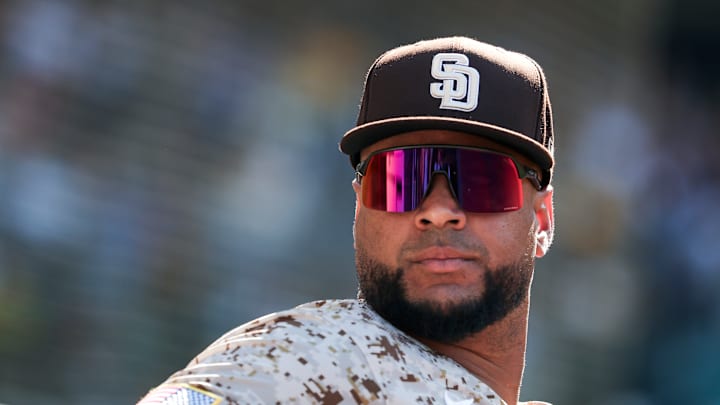This is what a soft reset looks like when you’re trying to thread the needle between staying dangerous and staying solvent. And, for once, these are a flurry of official acts about the roster, not another round of managerial news or podium drama. The San Diego Padres’ latest moves weren’t splashy, but they were exactly the sort of cold, adult decisions this team has to make.
Declining options on Elias Díaz, Tyler Wade, and Kyle Hart doesn’t move the back pages; it clears brush. It says, out loud, that 2026 can’t be another season of sunk-cost minutes, replacement-level at-bats, or low-leverage innings just because somebody has a vesting clause. It’s a pivot toward efficiency, paperwork, not press conferences; dollars that weren’t buying wins headed back into the shop.
Padres decline options on three role players to free up offseason flexibility
Make no mistake, this is also a message about standards. If the Padres are serious about clawing back power on offense and leverage on the mound, then the roster spots behind the stars have to punch up. These three calls do that. They trim about as cleanly as you can without touching the core, create immediate flexibility, and — maybe most importantly — force real competition at two spots that drifted last year: catcher and the last arm(s) on the staff. It’s not ruthless for the sake of it; it’s necessary house-cleaning that sets the table for bigger choices to come.
Start with Elias Díaz. Per Annie Heilbrunn of the San Diego Union-Tribune, the Padres passed on a $7 million mutual option in favor of the $2 million buyout, a structure that always read like deferred money anyway, not a genuine path to a reunion.
Díaz logged 106 games and hit .204/.270/.337 (74 wRC+). “Around par” defense is perfectly fine if you’re getting average thump. The Padres didn’t. Paying $7 million to run back a below-average bat in a lineup already starving for slug would have been willful negligence. They took the medicine. Now the depth chart is brutally honest: Freddy Fermin sits atop it, and Luis Campusano remains in limbo.
Which brings us to the subtext: this front office has telegraphed its lack of trust in Campusano’s glove for a while, handing reps to older veterans even when Campusano was torching Triple-A. With him now out of options, a decision looms. Either you give him a real runway to catch, warts and all, or you move him while there’s still interest in the bat.
There’s a world where Campusano becomes the sweetener in a multi-player deal that solves a different problem. What there can’t be is another year of fence-sitting at the position while valuable plate appearances vaporize.
Tyler Wade’s call is the cleanest. The Padres declined a $1 million club option (with a $50K buyout) on a glove-first utility man who hit .206/.309/.252. You respect the versatility, left side of the infield, all three outfield spots, and you still move on. Bench bats in 2026 have to threaten something: speed that changes innings, contact that sets the table, or pop that flips a game. Wade’s elite skill is availability. That’s admirable in April; it’s not enough in October.
Kyle Hart is the pitching version of that same story. The Padres bet $1.5 million (including a $500K buyout on a $5 million club option) that his 2024 in Korea — 2.69 ERA over 157 innings — would translate to swingman value stateside. It didn’t. In 43 MLB innings, Hart posted a 5.86 ERA with a perfectly ordinary 20.7 percent strikeout rate and 7.3 percent walk rate, mostly in low-leverage work. With a tight budget and a bullpen/rotation hybrid role that needs to soak meaningful, stressful innings, the club simply can’t justify a raise. Thank you, next.
The headline here isn’t “Padres cut three guys.” It’s “Padres stop pretending.” Díaz’s mutual option was a paper tiger, Wade’s glove couldn’t hide the bat any longer, and Hart’s KBO translation didn’t take. San Diego chose clarity. That’s the right choice. Now comes the real test: turning these freed-up dollars and roster spots into players who change game states, not just the lineup card font. If this front office keeps that same energy, no sentiment, no sunk-cost illusions, the next wave of moves can actually move the needle. And that’s how you kickstart an offseason in earnest.
